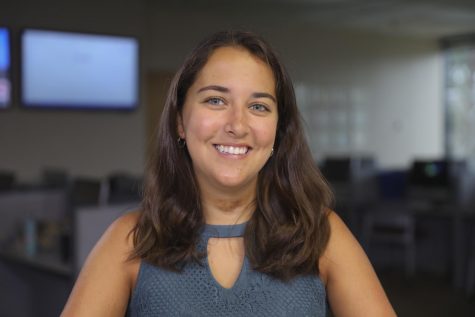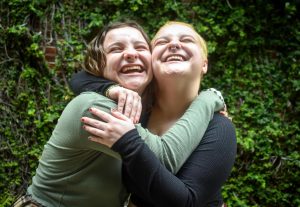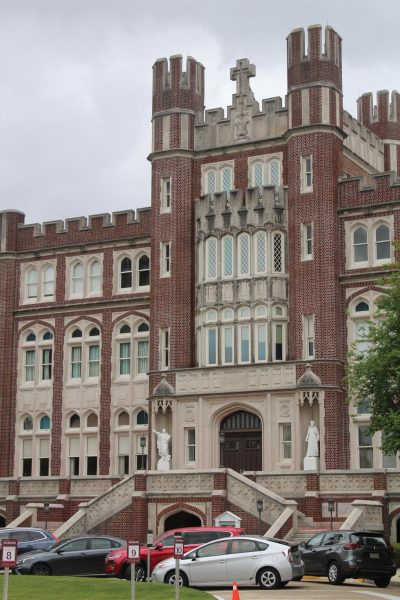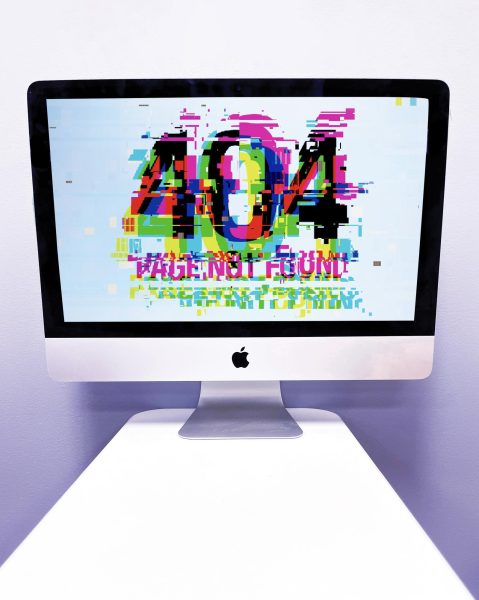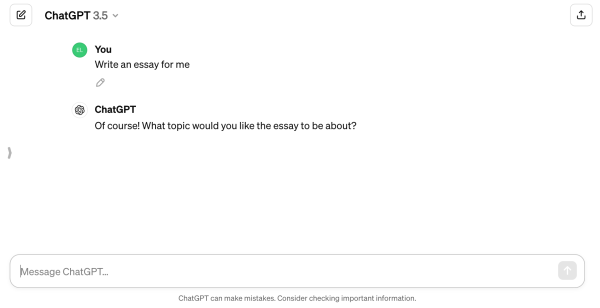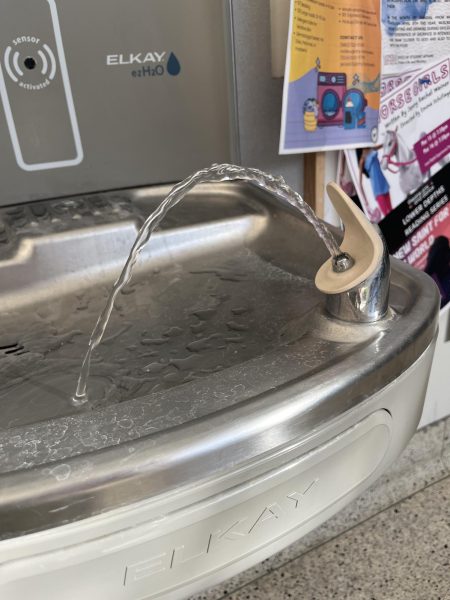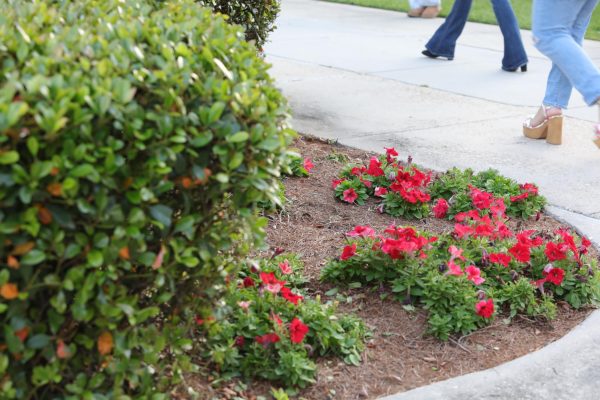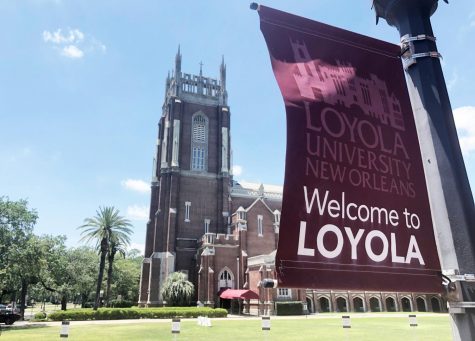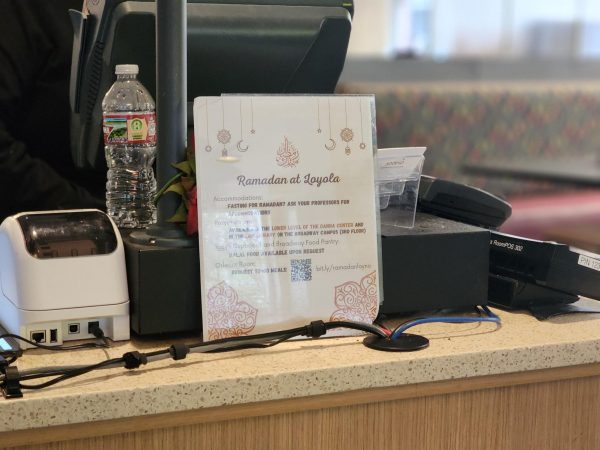Project Magis makes progress on initiatives
March 16, 2018
Project Magis has been making headway with the initiatives to improve the Loyola community and university as a whole since being initiated in August.
After years of financial hardship, enrollment problems and accumulated debt, David Borofsky, interim provost, and 153 university staff and faculty spent the summer creating key initiatives and workstreams for Project Magis. Project Magis is a strategic planning process that hopes to bring the university to a place of financial stability.
In August, Borofsky held a faculty and staff town hall meeting, where monetary specifics of Project Magis were discussed, as well as workstreams: plans which are meant to help cut costs and improve efficiency.
“Planning has never been a problem here, it has been the implementation. We will implement this plan, and it isn’t going to be easy,” Borofsky said at the town hall meeting.
Over the course of this academic year, the administration has been meeting weekly to discuss the project. Steps have been taken to involve more faculty and students, including having current students text potential students about attending Loyola in the future, according to Borofsky.
“We’re working on involving and continuing to involve more people,” Borofsky said.
According to Borofsky, the board, with the help of the Mackenzie Financial Planning Group, set financial targets for the university through 2021. According to these targets, in the fall of 2019, the university will have an additional $20.9 million in revenue and there will be no draw from the endowment inthe 2019-2020 fiscal year.
When Borofsky spoke in August, he was joined by John Head, vice president of management enrollment; Cissy Petty, vice president of student affairs; Maria Calzada, dean of the College of Arts and Sciences; and Laura Frerichs, vice president for marketing and communications. Each workstream leader presented a presentation slide featuring some key initiatives their workstream would focus on.
“We’re starting to make some progress,” Borofsky said in March. “We’re meeting the goals in retention and admissions, but we’re not quite there for online yet.”
Head spoke about enrollment goals and plans to raise admissions. The workstreams’ initiatives included focusing on international students, transfer students and domestic first-year enrollment for the 2018, 2019 and 2020 fall semesters. Head mentioned that Project Magis allowed for university funds to create a new position on his team. A new transfer recruiter joined Loyola on Sept. 5. Head also spoke about efforts to increase international enrollment from places such as Vietnam, China and South America.
The fourth initiative for the admissions workstream was the fall 2017 enrollment yield.
“Our admissions for fall of 2018 is trending seven percent ahead of last fall which was our biggest class since 2012 or 2013,” Borofsky said.
If all of those admitted students attend Loyola in the fall, it will be the largest class the university has ever had, according to Borofsky.
Petty introduced the initiatives that are part of the workstream which aims to improve university retention rates. The five initiatives are success coaching, centralized advising, a university success course, focusing on populations at risk and cumulative impact.
“We will touch 600 first-year students and have one-on-one coaching with them,” Petty said about the success coaching initiative.
The university success course will emphasize oral, written and communicative skills, as well as consent, alcohol and drugs, and mental health. Petty stressed that a sense of belonging is the thing that keeps students happy and at Loyola.
As part of this workstream, Petty also said that two new positions have been created to help Elizabeth Rainey, director of retention and student success.
According to Petty, retention goals have been set for the next three years, at 82 percent in 2018, 84 percent in 2019 and 88 percent in 2020. Petty admitted the goals were aggressive, but stated she believes the goals can be accomplished with the help of everyone on campus.
“Put your arms around the campus, put your arms around the students, and I think we will see the success,” Petty said.
The retention rate for spring 2018 is up to94 percent according to Borofsky, which is the second highest retention rate Loyola has had in the last seven years.
The third featured workstream—faculty productivity and academic enhancement—was introduced by Calzada.
Calzada admitted that in previous years she was very worried about Loyola’s financial future. Project Magis has reassured her. The key initiatives include new programs, summer school, intercessions, faculty stipends, Blackboard improvement, improving faculty course load and faculty buyouts.
New online courses that last eight weeks have been initiated for the spring semester. As of now, there are 23 courses, but admissions hopes to have the numbers up to the mid-thirties by the end of the week, according to Borofsky.
Frerichs then spoke about the marketing workstream, which includes initiatives that will aid in sharing Loyola and Project Magis success stories, supporting other workstream initiatives, promoting faculty experts, creating a strong alumni database, managing social media and prioritizing university rankings.
Borofsky then spoke to the room about the results of an organizational health survey taken by faculty and staff in 2017. Participants were asked to answer questions about the university such as direction, accountability coordination and control, leadership, work environment and more.
Loyola faculty and staff ranked in the sixth percentile of the over 10,000 institutions that took the survey, landing the university in the bottom quartile. Borofsky described the results as painful.
According to the results, Loyola’s faculty and staff saw a lack of operational discipline from their institution. Borofsky outlined the three areas of immediate focus to improve: financial management and transparency which will be achieved through town halls and budget management training; role clarity interventions through a review of organizational charts; rewards and recognition through a new program called “Pay it Forward,” where an office that has gone above and beyond expectations will be recognized.
Borofsky did reveal that a second part of the survey allowed faculty and staff to write out their thoughts about working at Loyola. He then read through the comments and collected the most commonly used words and phrases.
They were: Jesuit, caring, community, potential and diverse.
“How you feel about being here as employees is key to successful implementation of the plan,” Borofsky said.
“I think we’ve learned a lot about how to plan and how to implement,” Borofsky said. “I think one of the things we’ve actually gotten better at is taking action and doing things, which is something Loyola wasn’t as good at before.”


